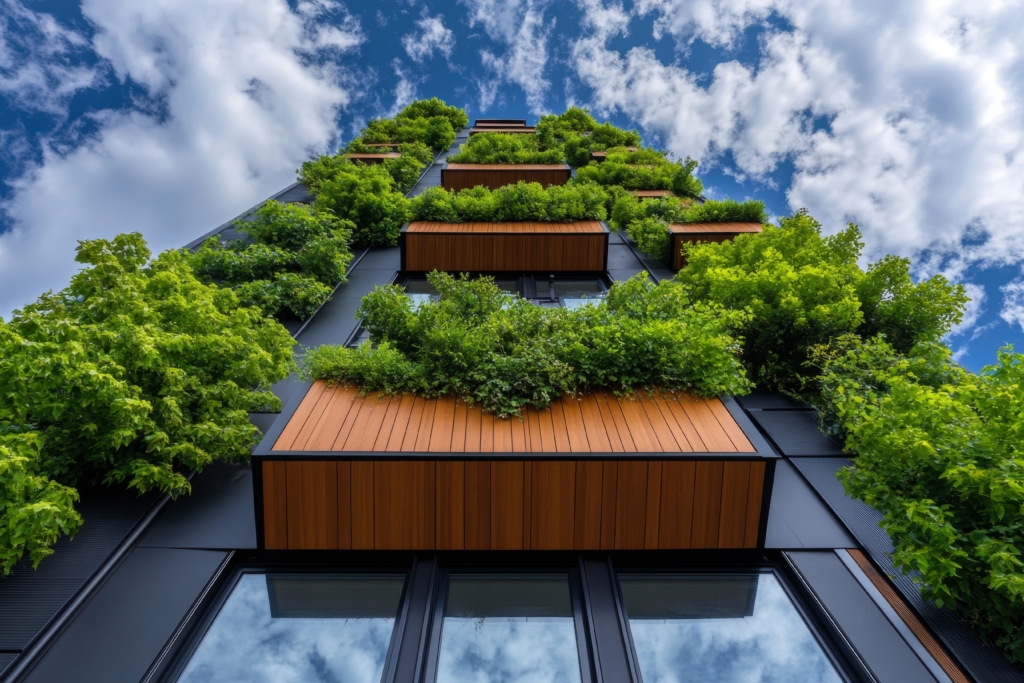As the world shifts toward sustainability, homebuyers are becoming more selective about materials in their potential homes. Sustainable building materials not only foster a healthier environment but also enhance energy efficiency, lower long-term costs, and improve durability. If you’re considering buying a home or renovating, knowing about sustainable materials can help you make better choices. In this blog, we’ll explore key sustainable building materials and important factors to consider when selecting eco-friendly options.
Understanding Sustainable Building Materials
Sustainable building materials come from renewable resources or have a lower environmental impact. They are chosen for their abilities to save energy, conserve water, minimize waste, and improve indoor air quality. Choosing sustainable materials benefits the planet and significantly boosts the value of a home.
Key Sustainable Building Materials
- Bamboo: Bamboo grows quickly and serves as an excellent flooring option. It is strong, versatile, and can be harvested while allowing the plant to regenerate. Bamboo flooring is eco-friendly, visually appealing, and durable.
- Reclaimed Wood: Reclaimed wood comes from old buildings and other structures, giving new life to materials that would otherwise be wasted. This wood adds character and provides a unique look for flooring, cabinetry, and furniture. Using reclaimed wood reduces the demand for new lumber.
- Recycled Steel: Steel is highly durable and can be recycled indefinitely without losing strength. Using recycled steel in construction conserves natural resources and cuts energy consumption during manufacturing. It’s commonly used for structural components, roofing, and siding.
- Cork: Cork is harvested from the bark of cork oak trees, which regenerate every nine years. This renewable resource not only offers sustainability but also provides excellent insulation, soundproofing, and moisture resistance. You can find cork used in flooring, wall tiles, and as an alternative to rubber.
- Straw Bales: Straw bales provide outstanding insulation and are often used as wall materials in eco-friendly construction. They reduce energy usage in homes and serve as a sustainable option.
- Low-VOC Paints and Finishes: Conventional paints can release volatile organic compounds (VOCs) that harm indoor air quality. Low-VOC and zero-VOC paints are available as eco-friendly alternatives that are safer for both occupants and the environment.
- Hempcrete: Made from hemp fibers and lime, hempcrete is a lightweight and non-toxic material that provides excellent insulation. It resists mold and pest infestations, making it a popular choice for green building projects.
- Rammed Earth: This ancient technique compresses soil to create robust and thermally efficient walls. Rammed earth requires minimal processing and blends well with its natural surroundings, promoting sustainability through natural materials.
Benefits of Sustainable Building Materials
- Energy Efficiency: Sustainable materials often have superior insulation, leading to lower energy consumption for heating and cooling.
- Durability and Longevity: Many sustainable materials withstand harsh weather conditions, reducing the need for repairs and replacements over time.
- Healthier Indoor Environments: Low-toxicity materials improve indoor air quality, making homes safer and more comfortable.
- Reduced Environmental Impact: Sustainable materials lower waste and pollution, helping to combat climate change.
- Higher Resale Value: Homes with sustainable materials often fetch higher resale prices, reflecting the rising demand for eco-friendly properties.
What Homebuyers Should Consider
- Certification and Standards:
Look for certifications such as LEED (Leadership in Energy and Environmental Design), that verify materials meet strict sustainability standards. - Local Sourcing:
Choose locally sourced materials. This decision reduces transportation emissions and supports local economies. - Durability and Maintenance:
Consider how sustainable materials will perform over time. Invest in high-quality options that require less maintenance and offer longer lifespans. - Resale Value:
Think about the potential resale value of homes built with sustainable materials. More buyers prioritize sustainability, which can increase property value. - Consult Professionals:
Work with contractors and architects experienced in sustainable building practices. They can provide insights into the best materials and methods for your project.
Conclusion
As a homebuyer, understanding sustainable building materials enables you to make informed decisions that benefit your wallet, your well-being, and the planet. By choosing eco-friendly options, you help create a more sustainable future for everyone.
You might also be interested in: The Rise of Eco-Friendly Homes: Benefits and Features







